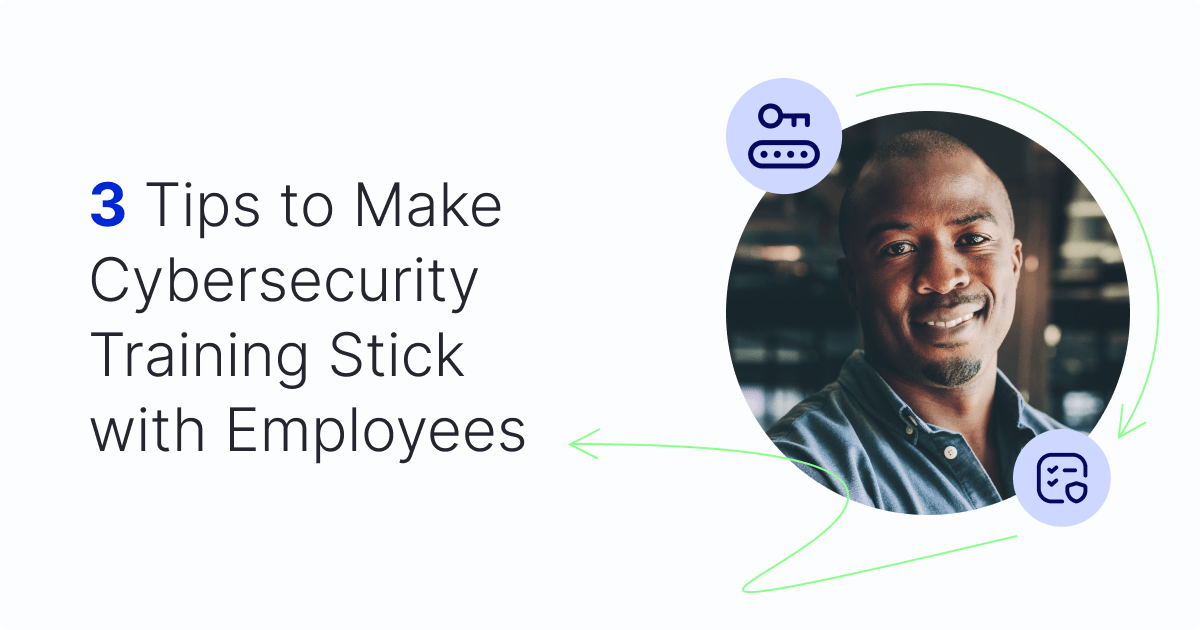October is best known for fall weather, spooky shenanigans, and the fun of Halloween, but it’s also a big month for cybersecurity. Since 2004, the U.S. government has recognized October as National Cybersecurity Awareness Month.
While people may be thinking about scary movies and creepy crawlies right now, nothing is more horrifying to an organization than a cybersecurity attack. A single successful hack can have serious financial and reputational repercussions, both personally and professionally. That’s why Cybersecurity Awareness Month aims to raise understanding of cyber threats and encourages everyone to consider the quality of their security efforts.
October is the perfect time to train employees on cybersecurity measures, but let’s be honest: security awareness training has long been a once-a-year, check-the-box training, which is often completed and forgotten. It’s vital that employees take cybersecurity awareness training seriously, but how do you convince them to listen?
It’s time to make cybersecurity engaging and relatable to your employees. These three tips will help you create cybersecurity awareness training that your company’s employees will actually follow through on.
1. Make It Personal
When an employee clicks on a malicious link or attachment, the repercussions can be drastic for the organization, but beyond feeling bad, they might not feel as though it will directly affect them.
While some employees might think it’s easy to tune out during training because they don’t think cybersecurity applies to them, the reality is that security awareness applies to everyone. Unless your employees are technological Luddites, they’ve likely digitized some form of their lives via social media, banking apps, mobile pay, and more.
This is the key to helping your employees see how critical cybersecurity is — after all, their actions online affect their personal safety, too.
During security awareness training, make cybersecurity as personal as possible. That might mean:
- Telling stories: Stories are much more interesting and engaging than a checklist-style presentation about computer viruses. Share personal anecdotes about relatable cybersecurity fumblings, like when you clicked on a spam link by accident. You can ask employees to volunteer stories of their own (if they’re comfortable) to show how common this really is.
- Mentioning children or families: Your employees might be digitally savvy, but are their children or possibly elderly parents? Offer tips on cybersecurity for kids (which usually apply to adults, anyway) so employees with children are more likely to perk up their ears.
- Highlighting common scams: Include commonly used business-specific threats, such as phishing scams, but your training should also highlight known vulnerabilities on the consumer side. For example, scammers have recently been identified exploiting the Starbucks app to steal money from customers’ accounts. Since it’s likely that at least a few of your employees use the Starbucks app, this information will definitely help them relate to your training.
2. Explain Why It Matters
Most cybersecurity training is used to tell employees what they shouldn’t do. While you should use these training programs to explain to employees not to open suspicious emails, it’s important to explain why it matters.
You don’t have to dive into the technical details, but you’ll want to explain the “why.” Your trainees are much less likely to disregard security measures like multi-factor authentication once they understand why it’s so important and the risks associated with not doing so.
If you’re concerned that it might make the training too technical, try it out on a few non-tech-savvy members of the company first to make sure it’s easy to understand. You can always include a few YouTube videos to explain cybersecurity concepts as video can capture attention in ways a training slide cannot.
3. Provide an Actionable Playbook
Cybersecurity awareness training can be a little overwhelming, so if your employees aren’t sure what steps to take after training, they can feel disempowered and more confused than they were before the training.
End trainings with a simple, one-page checklist. On one side, provide proactive measures employees can take to protect themselves with clear, actionable steps, like:
- Setting a reminder on their phone to update their passwords every quarter.
- Installing a password app, like 1Password or LastPass.
- Installing antivirus software on their personal smartphones.
On the other side of the sheet, you can design a playbook of what they should do in the event of a hack. This way, the information is easily accessible if they ever find themselves the victim of an attack, either at work or at home. It’s very easy to panic when accounts are compromised, so a clear checklist can help them stay calm and take immediate action.
Cyber Threats are Spooky, but Training Shouldn’t Be
Cybersecurity is often a secondary consideration because everyone within an organization has growing lists of competing priorities. Use National Cybersecurity Awareness Month as an opportunity to sit down with your team and reevaluate your approach to security.
Your employees’ mindset matters, especially in a small organization. When you make your training more relatable, they’ll care more and follow through on your cybersecurity best practices.
Remember, everyone makes mistakes. That’s why it’s crucial to have a risk management solution backing up your business — just in case an employee does click a malicious link. Get a quick demo of the Risk Cloud™ platform to see how we can bolster your business’s security.
